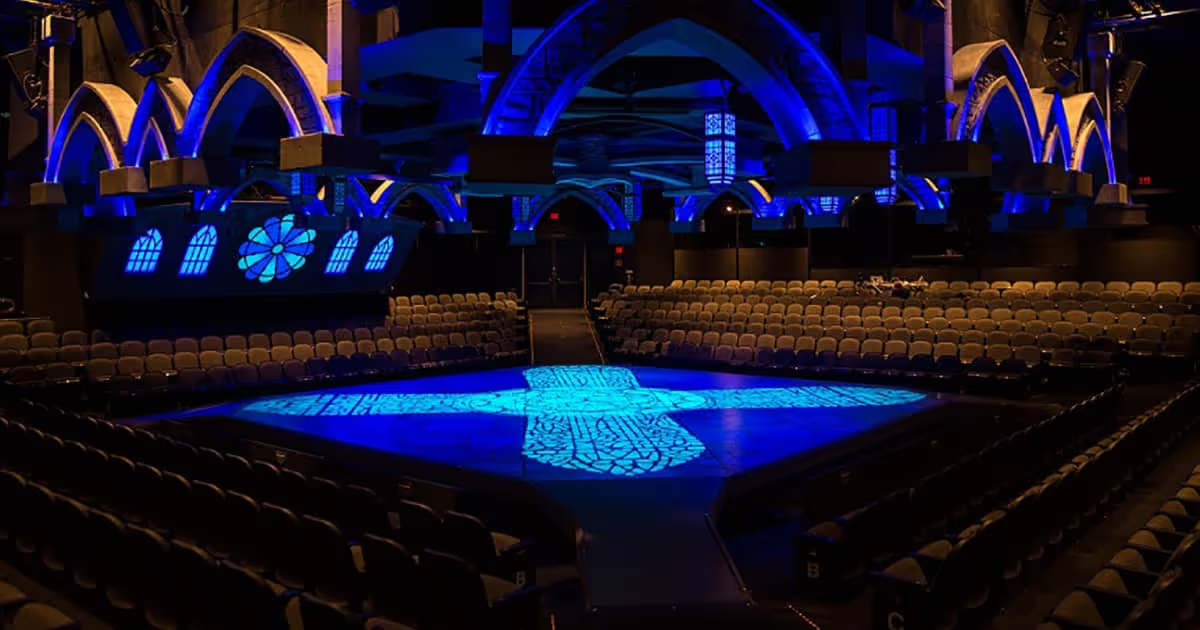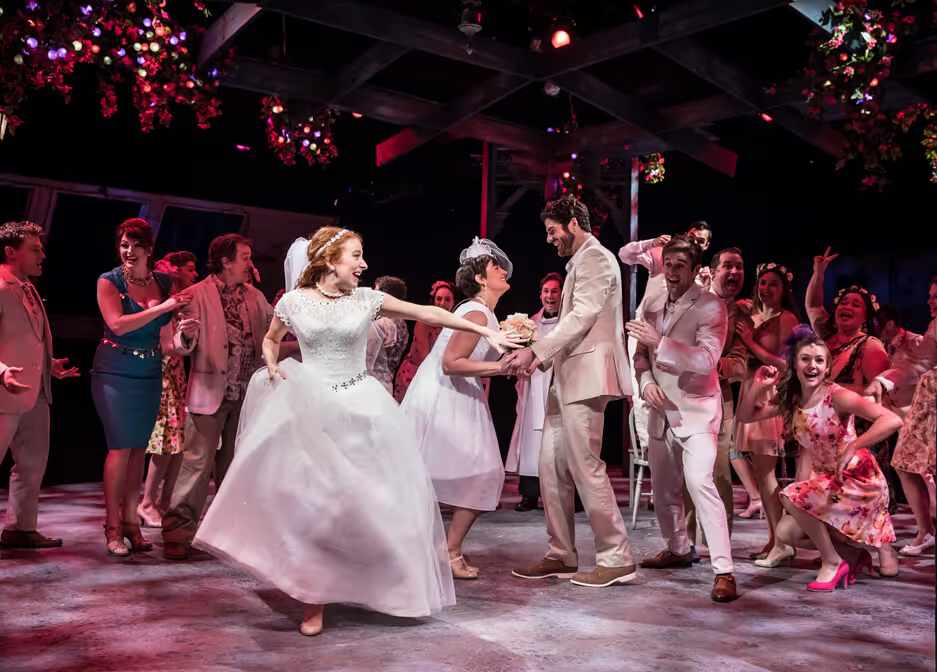Mamma Mia!
Lincolnshire—After decades of success on the major commercial stages of the world, “Mamma Mia!” is now available to regional theaters and it is only right and proper that the Marriott Theatre has gotten first dibs on the ABBA musical hit in this area. Marriott has won deserved huzzahs for its creative stagings of contemporary hits and it does its reputation no harm with its high-energy production of “Mamma Mia!,” an eagerly anticipated show that has already been extended two weeks.
The Marriott production is in the creative hands of director Rachel Rockwell who has strengthened the show from a jukebox music repository of two dozen ABBA hit songs into a musical that can stand on its own artistic feet.
The story continues to unfold on a Greek island. American expatriate Donna Sheridan operates a small taverna on the island while raising her daughter Sophie. The narrative revolves around Sophie’s attempt to identify her real father. From reading her mother’s diary, Sophie learns that her father could be one of three men who had relationships with Donna nine months before Sophie’s birth Sophie invites the three men—Bill Austin, Harry Bright, and Sam Carmichael--to her wedding, hoping to discover which one is her true dad.
It’s appropriate at this point to honor the contribution of English playwright Catherine Johnson to the success of “Mamma Mia!.” Although all the songs were written separately, Johnson’s book makes them fit naturally into the story, a claim that can be made for the books of precious few jukebox musicals. The unaware spectator could easily accept that the songs by Bjorn Ulvaeus and Benny Andersson were really composed as a cohesive score specifically for the show.
Rachel Rockwell was not content to direct “Mamma Mia!” as an evening of ABBA’s greatest hits. She harnessed the story to explore the tensions between a single mother and a daughter who wants to know where she came from. The focus shifts to Sophie rather than Donna. For the role of Sophie, Marriott has cast Tiffany Tatreau, who made such a positive impression in the Chicago Shakespeare Theater’s “Ride the Cyclone.” Tatreau is a petite performer who looks and acts convincingly like a 20-year old and sings handsomely. Her scenes with Danni Smith’s Donna Sheridan crackle with the passion and tensions of a mother-daughter connection under stress.
Rockwell has also muted the broad comedy that has infected so many “Mamma Mia!” productions, especially in the characters Tanya and Rosie (Meghan Murphy and Cassie Slater), Donna’s two old friends from their rock and roll days in the free booting 1970’s. Murphy can be especially thanked for toning down her sexpot character from a two-dimensional cartoon into a worldly lady on the cusp of middle age who is starting to show life’s miles on her. Slater’s Rosie likewise reins in the man-hungry stereotype into a woman who really aches for a man in her life.
But the romantic storyline isn’t the pull that has gotten 60 million people into theaters throughout the world over the past quarter century. It’s the ABBA music, though the songs never made nearly the impression in the United States that that they made in Europe. So when the musical opened on Broadway in 2001 after its premiere in London in 1999, it was greeted by customers were were largely hearing the music for the first time, becoming a gleeful voyage of discovery.
The hits are all there, from the title song to “Waterloo,” “Thank You for the Music,” “Money, Money, Money,” “SOS,” and “Take a Chance on Me.” The megahit of the score turns out to be “Dancing Queen,” first sung during the opening act and then as the major number in the star spangled finale. The curtain call “Dancing Queen” drew a hysterical reaction from the opening night London audience and instantly cemented “Mamma Mia!” as a musical that would be around for a long, long time. The audience dancing in the aisles during the finale has become a ritual, and the in-the-round configuration of the Marriott theater severely inhibits audience revelry in aisles already filled with the performers. But the theater still rocked.
Sophie’s three possible fathers are well played by Derek Hasenstab (perfect as the grizzled Australian travel writer Bill Austin), Peter Saide (Sam Carmichael, a fine performer who is maybe a little young for the role), and Karl Hamilton (Harry Bright, in a performance that neatly sidesteps the low comedy nerdy elements in the character). Kayla Kennedy and Lillian Castillo are fine as Sophie’s best friends and Russell Mernagh is excellent as Sky, Sophie’s hunky love interest. Liam Quealy does a delicious job as one of Sky’s muscular young friends who tries to hit on Tanya and quickly learns that he is overmatched.
The show’s motor is driven by Ericka Mac’s exciting choreography, displayed in all its spangled and sexy glory by the terrific chorus of young dancers. She deftly weaves the dances dramatically into numbers like the expressionistic “Under Attack” and the all-female “Gimme! Gimme! Gimme!.” Patti Garwood conducts the accompanying orchestra with the proper rocking synthesizer and guitar sound.
Scott Davis has to live within space limitations in his set designs. There is little opportunity to create the sense that the action takes place on an island. Still, he does enough on the open stage to comfortably accommodate the action and especially the dancing. No such limitations restrict Theresa Ham in executing her hot costume designs. Jesse Klug is the lighting designer and Robert Gilmartin the sound designer.
I have been an unapologetic “Mamma Mia!” idolater since I first saw the show almost 15 years ago. I was impressed by how much better it was than it needed to be, declining to coast solely on the ABBA music. The Marriott revival earns special commendation for the depth of its casting, its talented and exuberant dancers, and the elevation of its book into a story worth watching and not just a shell to accommodate the songs. The expectations of the show’s arrival on the Marriott subscription schedule have been well satisfied.











